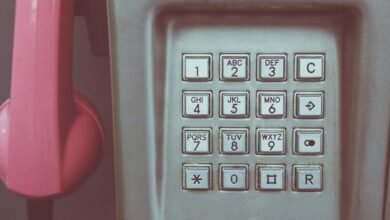Find Out Everything Caller Check 3801309633 3511942317 3512127195 3892844902 3516844930 3511208398

The inquiry into the origins of numbers such as 3801309633, 3511942317, and others prompts an examination of caller identification systems. Understanding these identifiers can reveal necessary information about potential scams or telemarketing calls. Utilizing reverse lookup tools becomes imperative in uncovering caller identities. However, the effectiveness of these tools may vary, leading to questions about their reliability. What methodologies can enhance the search for accurate details regarding these numbers?
Understanding Caller ID: What Do These Numbers Mean?
Caller ID serves as a crucial interface between the recipient and the incoming call, providing essential information about the caller before the phone is answered.
Through caller identification, users gain insight into the phone number formats utilized, which can vary by region and service provider.
Understanding these formats enhances consumer awareness, enabling individuals to make informed decisions regarding which calls to answer or ignore.
Potential Scams and Telemarketing Calls: A Closer Look
How can individuals effectively discern between legitimate calls and potential scams? By enhancing scam awareness, one can identify common telemarketing tactics, such as pressure to act quickly or requests for personal information.
Analyzing caller behavior and questioning the legitimacy of the offer are crucial. By understanding these elements, individuals can safeguard their personal information and maintain their autonomy against deceptive practices.
How to Use Reverse Lookup Tools Effectively
Identifying potential scams is only one part of a comprehensive approach to protecting personal information; utilizing reverse lookup tools serves as a powerful method for verifying unknown phone numbers.
By employing effective search techniques, users can uncover caller identities, assess reverse lookup benefits, and mitigate risks.
Accurate input and cross-referencing multiple databases enhance reliability, fostering informed decisions regarding unsolicited communications and safeguarding personal autonomy.
Tips for Blocking Unwanted Calls and Protecting Your Privacy
Blocking unwanted calls is essential for maintaining privacy and reducing the risk of potential scams.
Users should leverage call blocking features available on their devices and configure privacy settings to limit exposure.
Utilizing specialized applications can enhance call filtering capabilities, while registering with national Do Not Call lists provides an additional layer of protection.
Together, these strategies empower individuals to reclaim their communication space effectively.
Conclusion
In conclusion, utilizing reverse lookup tools to investigate numbers like 3801309633, 3511942317, and others can significantly enhance call screening practices. Notably, studies indicate that nearly 50% of all mobile calls are now considered spam, underscoring the urgency of discerning legitimate communications from potential scams. By employing these tools and strategies, individuals can protect themselves from unwanted intrusions and safeguard their personal information, fostering a sense of security in an increasingly connected world.




